The 1300 series was a joint venture between ICT (International Computers and Tabulators) based in Putney and GEC telephones based in Coventry. GEC provided the electronics and ICT the peripherals. A jointly owned design company was set up, Computer Developments Ltd of Kenton, Middlesex. Arthurs serial number is 075, this dates him to the early 60’s.
We know Arthur was used by ICT itself, they ran a bureau service for customers, then to the Liverpool Victoria Friendly Society (LVFS) to join Samantha another ICT 1301 LVFS were already operating.
ICT built around 200 machines before moving on to the next model. The ICT 1301 cost £68,000 in 1962, but with the addition of ancillaries, logistics, engineers, preparing a room, electrical installations and air conditioning, the cost to install the computer could be as much as £250,000. This is £5,240,000 in 2019. The machine’s logic boards were made by GEC Telephones in Coventry. The ICT 1301 was the first ICT machine to use Core Memory. It could operated in mixed base 20 & 12, capable of handling sterling currency in pounds, shillings and pence. At the time the UK used an old currency system that used 12 pence to one shilling and 20 shillings to a pound. The hardware designed for this alowed for greater efficiency and speed than a software solution would have.
Over 4,000 circuit boards are used in the construction of the 1301. OA5 Germanium diodes were used in large quantities, and Mullard GET872 Germanium transistors were used throughout the design.
The ICT 1301 was designed to use Decimal or UK Currency modes only. No Binary mode was available. The instruction set was also in Decimal. This made programming very easy for new people to learn, but annoying for those who programmed in Binary, Octal or Hex.
Dispite its size, the ICT 1301 was considered to be a small/medium mainframe computer. It also claimed to be the best selling 2nd Generation Electronic Data Processing system in the UK.
Arthurs specifications:
Architecture : 4 bit parallel by 12 digit serial. Decimal and 1’s compliment arithmetic.
Clock speed: 1 million cycles per second
Main memory: 2,000 words of 48 bits.
Tape storage: Five magnetic tape drives operating at 75 inches per second (22,500 digits per second).
Line printer: 120 column, 600 line per minute printer with 50 different characters.
Card reader: 80 column cards, 300 or 600 cards per minute.
Card punch: 80 column cards, 100 cards per minute.
Drum storage: 12,000 words of 48 bits.
Paper Tape Reader at 1,000 characters per second.
Paper Tape Punch at 300 characters per second.
The computer weighs around 5.5 Tonnes, and takes up around 6 by 7 Meters of floor space. It used 13kW of power maximum, and 6.2kW at idle.
Memory Store (IAS)
A core is a small washer of magnetic material which can be magnetised in either of two directions, thus storing a single binary digit. Three wires were threaded through each one, when an electric current flows through two of the wires the core will be magnetised in a direction dependent on the direction of the current flow. If not already magnetised in that direction, a pulse would be produced in the third wire, allowing the memory to be read. Arthur’s main memory consists of 100,000 of these cores, arranged as 2,000 words of 50 bits (48 data and two parity), and all hand-wired!. In modern terminology this works out to be almost 12 Kilobytes. Yes Kilo, not Mega or Giga! With it’s control electronics, the memory weighs about half a ton.
It is also worth remembering that Core Memory is non-volatile. That is, it holds the memory when it is powered down, unlike modern computer memory.
The Immediate Access Store (IAS) is another name for the Core memory. The 2,000 words of 48-bits are arranged into 12 lots of 4-bit characters when calculating UK currency. Decimal numbers were expressed as characters. While not being the most resource efficient, this configuration allowed hardware calculations of the UK currency system of base-20 and 12 using binary-coded-decimal. This significantly increased input/output speed and ease of programming at the expense of memory use. This was considered to be adventagious over base-2 binary.
Magnetic Tape Drives
Five magnetic tape drives operating at 75 inches per second. Data is recorded at 300 bits per inch on ten tracks, 4 data tracks, four inverse data tracks and two parity tracks. This allows single bit errors to be both detected and corrected.
Drum Store
The backing store on the ICT 1301 is on a Magnetic Drum, it is powered by a 3/4 horsepower three phase motor driving the drum at a speed of 5,250 rpm. Each drum holds 12,000 words of 48 bits. Around the drum are 240 read/write heads which are fixed in position, unlike modern disks which move their heads to access different tracks on their flat media. This would be equivelent to around 72kBytes of storage using todays formats. The drive unit weighs around 300kg.
Drum Storage was also known as 2nd level storee. It is arranged along its length into 60 channels, each channel having 200 words. A channel was further divided logically into “decades” of ten words each. A single decade was the minimum unit of transfer in either direction between drum and IAS.
ALU (Algarithmic Logical Unit)
The ALU preforms all the calculations. 2x Data and Op Code goes in, calculated Data comes out. The section that preforms the calculations is calle the “Mill”.
There are three registers in use on the ICT 1301; A, B and C. All three registers hold 12 characters (digits).
Register A has a 48-bit Parallel connection to the IAS. It is used to write/read data to/from the IAS, Drum Store and Tape Store.
Register B is used in most ALU calculations, and also would be the ALU link to the card punch, paper tape reader/punch and Teletype/line printer if the system had one. It was also used for bit-shifting.
Register C is used for mutliplications and also for the card reader
Peripherals
The ICT 1301 can make use of many peripherals. These include the IBM 082 Card Sorter, and the IBM 129 Card Reader/Writer. A Teletype was available but rarely used. A Line Printer was also a common addition.
Other ICT 1301’s
It is believed that four ICT 1301s still exist. In addition to our own Arthur (Serial No. 75), there is Flossie (Serial No. 6) at the National Museum of Computing. A 3rd machine lives at the Toitū Otago Settlers Museum in New Zeland (Serial No. unknown). There are mentions of a 4th machine in France at the aconit.org collection. They have confirmed in an email on 25th March 2019 that they have parts of an ICT 1301, but not the whole machine: “We got about 18 elements of ICT computers, but most of them are not describe enough to be sure of their origins. Some are surely from an ICT 1301, like AC 12217 Tambour magnétique 1301 (ICT) and peharps AC 12244 Pupitre de commande Control & Display Unit (ICT) on our Data-base.”
TV Fame
If you are a fan of James Bond or Doctor Who, then you should know that the ICT 1301 was used as a prop during filming. In James Bond, the control panel can be seen in both The Man With The Golden Gun (1974) and For Your Eyes Only (1981). In Doctor Who, Season 8, “Terror of the Autons” (1971) where the Master uses the ICT 1301 as a teleportation device, and Season 10, “The Green Death” (1973). An apperance was also made in Blakes 7 – Season 1, Episode 2, “Space Fall” (1978), The Pink Panther Strikes Again (1976) and Hammer horror film The Satanic Rites of Dracula. A control panel was also seen in Loretta Swit – I Feel the Earth Move on the Muppet Show 502.
Special Thanks
I Would like to thank Roger Holmes owner of Flossie, currently the last working ICT 1301 for proving the information and specification’s of Arthur.
Trivia
Rhodes University was the first university in South Africa to install a computer – an ICT 1301 in November 1965. It was replaced in 1969 with a more advanced computer. Read more about it here.
Stuart Fyfe
Stuart used to operate an ICT 1301 computer at Galdor, Surbiton. Stuart has done a brilliant Youtube video for us talking about the ICT 1301. You can watch the Youtube video here.
ICT 1301 Photos
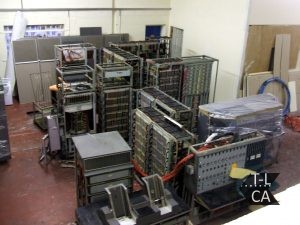
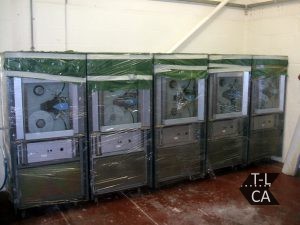
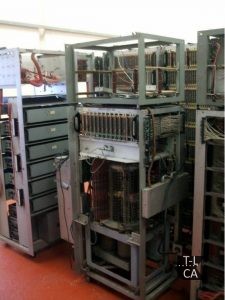
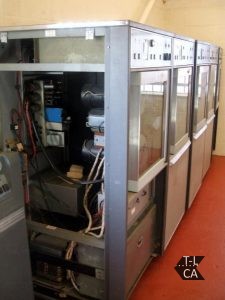
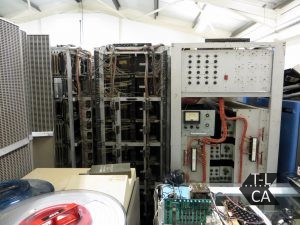
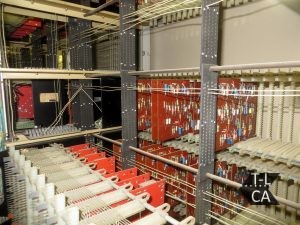
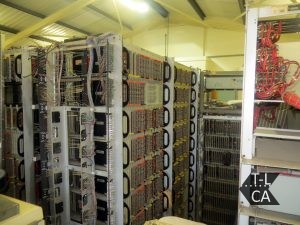
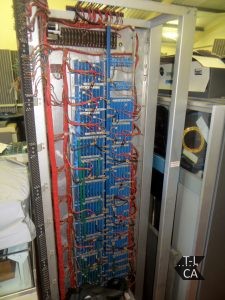
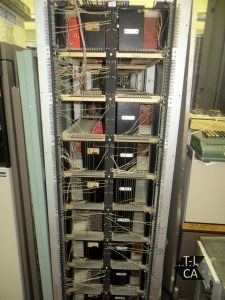
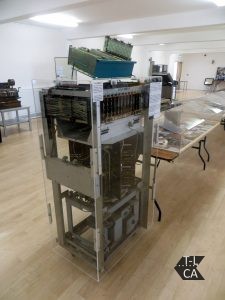
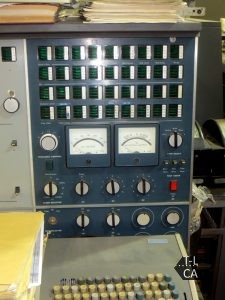
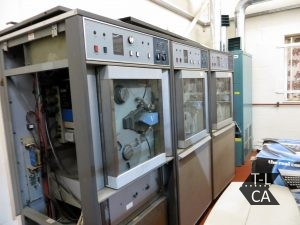
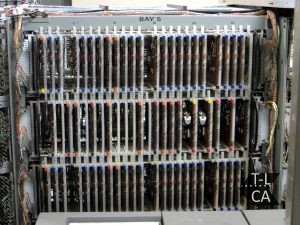
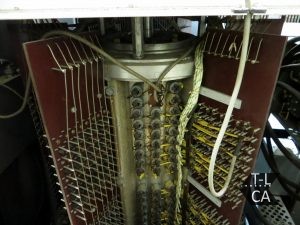
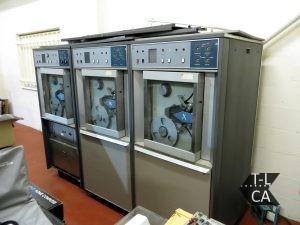
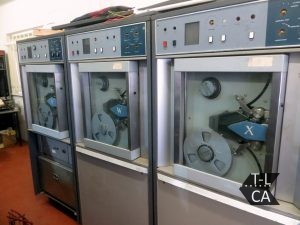
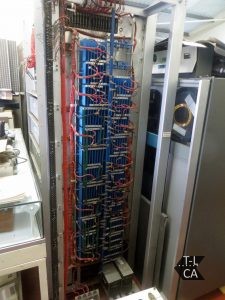
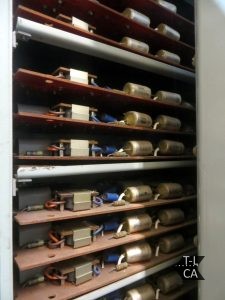
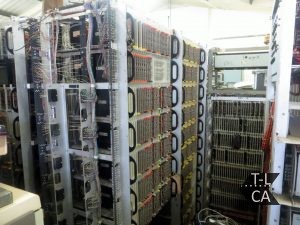
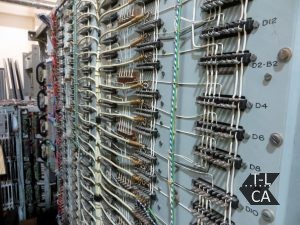
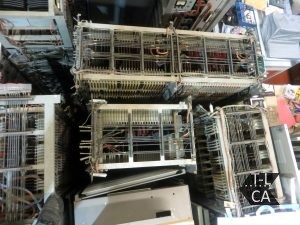
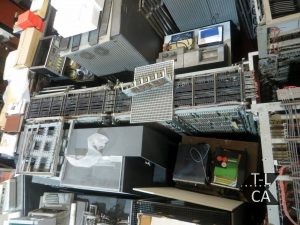
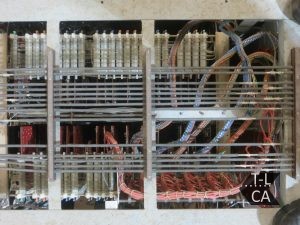
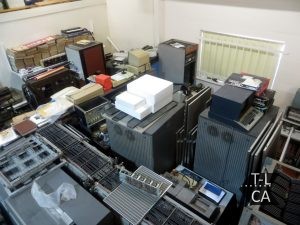
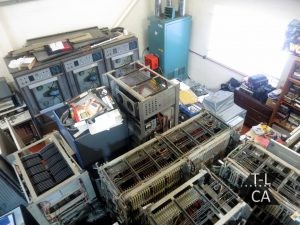
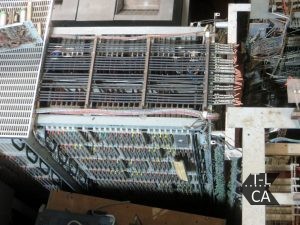
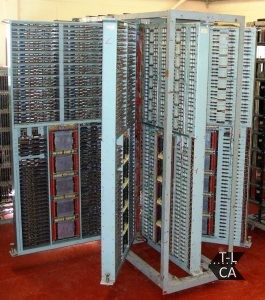
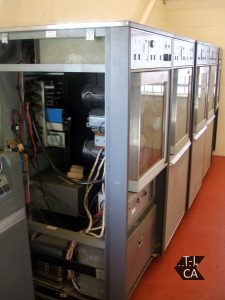
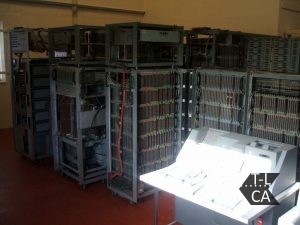
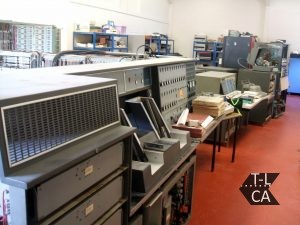
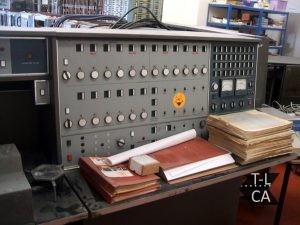
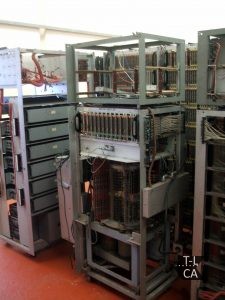
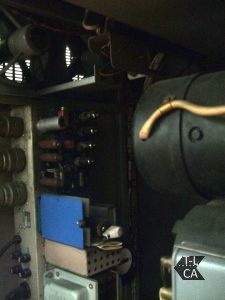
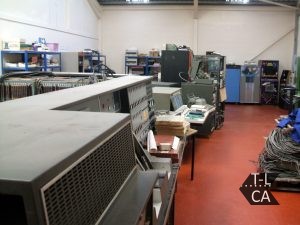
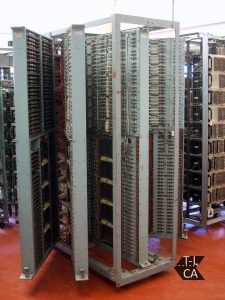
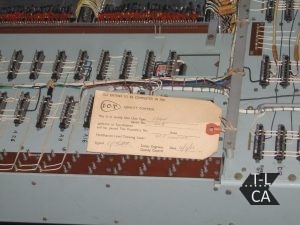
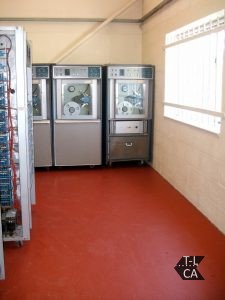
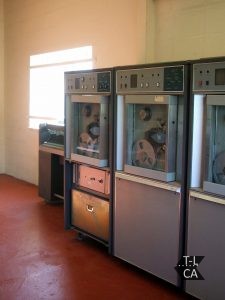
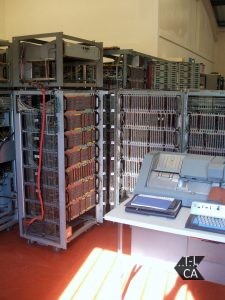
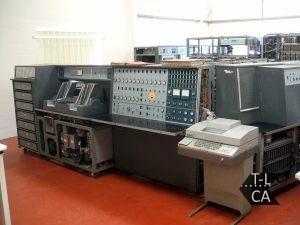
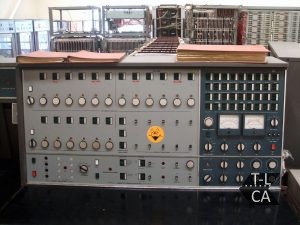
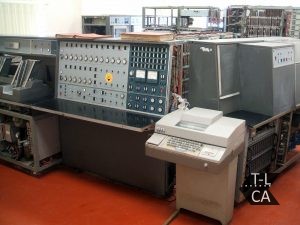
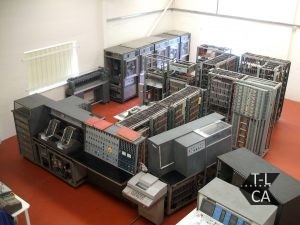
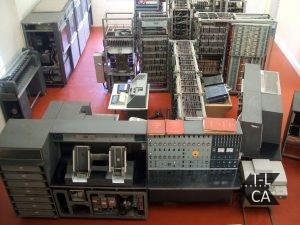
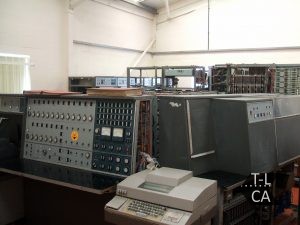
3 Comments
Barry Goodman · January 7, 2022 at 10:58 pm
I was 1301 engineer from 1962 looking after machines at Putney Bridge House South there were 3 there, Selfriges , Ministry of Education M/C no 40 At Romney House, Westminster, Ministry of Works Lambeth Bridge House, which
was Upgraded to 1302 and moved to Hastings. Also Home Office at Tintagel House Vauxhall .Later worked on Pyrenes M/c on Great West Road Brentford . Was also involved with BEA Engineering at Heathrow and others
Stuart Fyfe · January 26, 2022 at 10:10 pm
The ICT1302 was at Hastings in 1970s when I came with friends to dismantle and remove the ICT1301 in an adjacent room (or parts thereof) to be kept stored as spare parts alongside our own active ICT1301 at Galdor in Surbiton. We thought we were being clever by bringing along a battery powered pallet truck to move the computer frames, but the truck was so heavy it broke through the floor panelling and was removed with difficulty. I now regret failing to talk to the people there to find out details of the 1302 – what the exec can do, what hardware upgrades convert a 1301 into a 1302, and how they use it. I can send you a picture of the place. If you know anything, please contact me, or The National Museum of Computing who now have our 1301. We also took the Tintagel House machine as spares. I expect you know this was the subject of a bomb attack by The Angry Brigade which did little more than dent a couple of panels. Any information or stories you have about this range of machines would be most appreciated. See the YouTube in the link.
Paul Hilton · February 24, 2022 at 8:13 pm
In Dec 1969 I started work with the then Ministry of Public Buildings & Works at Ashdown House in Hastings in their computer section. They had 2 1301 machines and 2 upgraded 1302 machines. I did fun preparation for both. I was told at the time, one off the former 1301 machines had gone to the BBC for use on Dr Who. Two of the major uses for them were Payroll producing the payslips for all UK civil servants around the world and Stock Control. One of the ICL engineers that were there continuously was Colin Settle who became a good friend along with his wife Bonnie. I left nearly 2 years later when they were upgrading to the ICL disk 1900 Series.